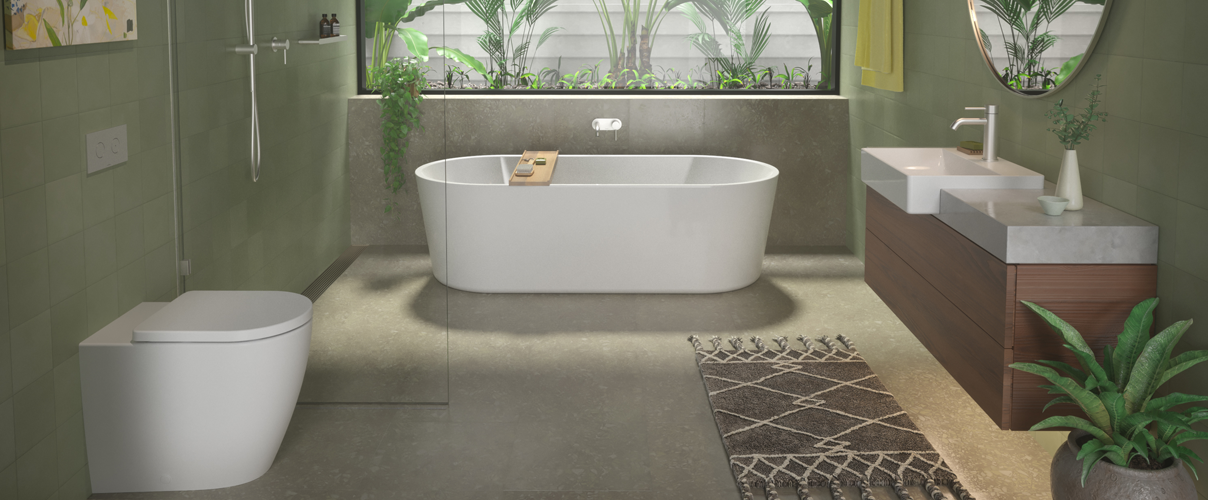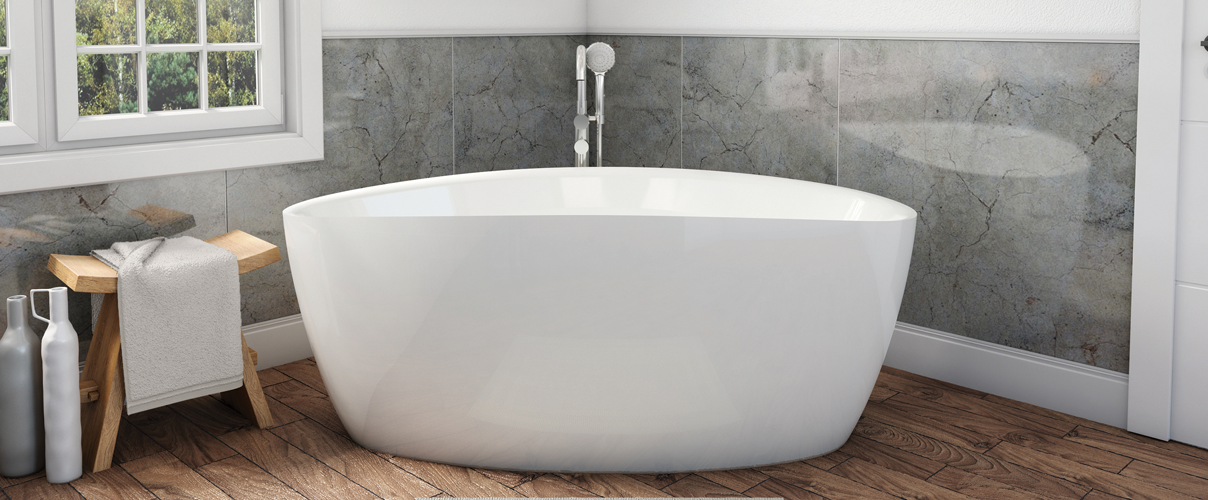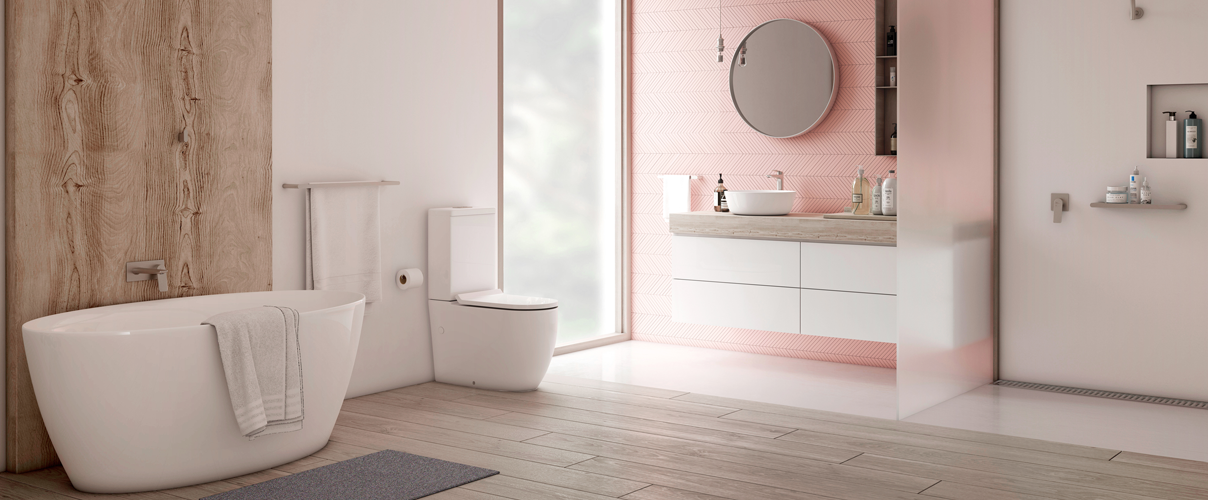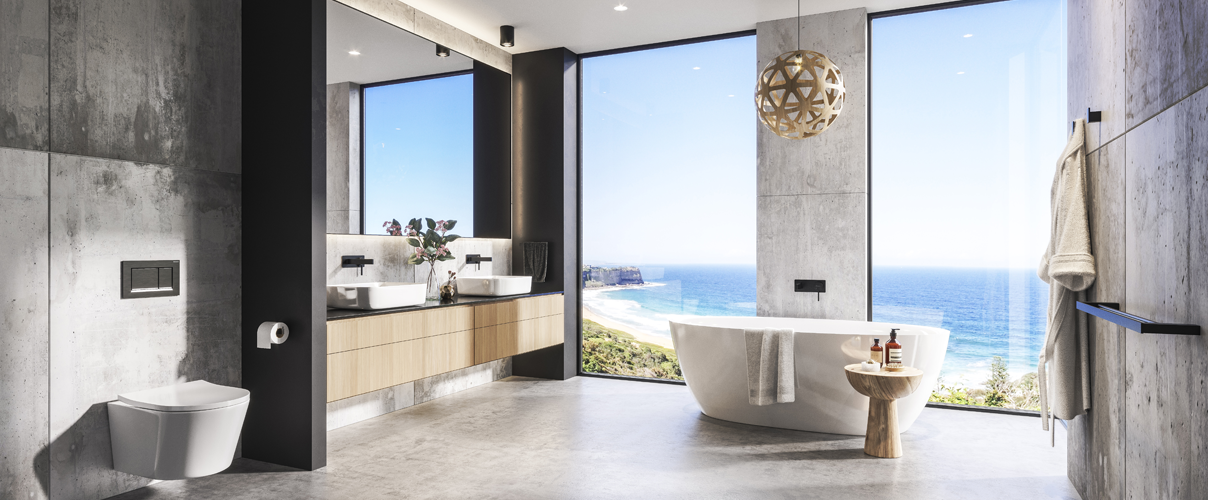Balancing Your Bathtub Options

Did you know we have over 250 bathtubs in our product range?
With so many options, choosing a bath is not such a relaxing process. But, it will be worth it.
In our bathroom buying guide for baths we say choosing a bath is all about balancing your options, including the use, size, style, shape, weight, budget and materials available.
So how do you balance your bathtub options? Let’s dive further into it.
Balance whether or not to install a bath
Your overall reason for installing a bath is going to open the faucet for every other decision.
Are you installing one because you or your family (including the dog!) use it every day, once every few months, or not at all but you think they look pretty and you heard they add value to your house?
Real estate agents generally accept that buyers want baths. At the same time, they say bathtubs are becoming a luxury item that people want, but don’t necessarily need or use. While the bath used to be almost exclusively in the main bathroom for the kids, there’s a growing trend to put a tub in the master ensuite for a statement look and an indulging soak.
When you look at it this way, there is logic in investing in a bathtub if you can fit one, but only spend what you think you’ll get out of it. In most cases, an inexpensive, practical tub that looks good in its place – not crammed in as an afterthought – is sufficient for your personal and resale needs without going overboard.
One more thing: you should at least keep one separate shower in your house. Having to step into the bathtub to shower could be a deal-breaker for buyers, especially for older people.
Balance your options by putting a value on them
To choose the best bath for your circumstances, think about what’s most important to you for each factor.

Use
This is about balancing practicality and luxury. Do you want a practical tub to bathe the children in or a tub you can soak in for hours? A comfortable soaking tub needs to be deeper, but if you need to reach over to scrub little hands and feet, you might need to sacrifice depth and opt for something a little shallower.
Size
You might want a big tub to stretch out in (or share with your significant other!). Ultimately, the size of your tub needs to be balanced against your available space. In a renovation, going up a size could come with additional time and financial costs to change the bathroom layout and plumbing configuration. Even in a new build, the cost of fitting a bathtub in your space could mean reducing the size of an adjoining room, or getting a single basin vanity instead of a double.
Fortunately, most brands offer tubs in a few size options. For example, the Raymor Winton freestanding bath comes in 1500mm or 1700mm.

Style
Both our bathtubs product page and our buying guide for bathtubs go into detail about the different styles you can choose from. In most cases the style of your tub will need to be balanced against space and cost.
In summary, the main styles are:
- Freestanding baths
- Built-in or inset baths
- Back-to-wall baths which are a hybrid between freestanding and inset
- Spa baths
Freestanding baths are luxurious, but they require more space and come at luxurious costs.
A spa bath definitely has benefits: they’re fun, and good for conditions like arthritis. However, they can be expensive, and you may need to add an electrician to your labour costs.
A built-in tub may seem like a cost-effective alternative, but do you have the budget to build the structure and tile around it?
Shape
Bathtubs come in many different shapes. Fienza bathtubs are popular choices amongst our customers and our catalogue includes round, rectangular, sloped/slipper and oval shaped options in this brand alone. There are also corner baths, hourglass, and even custom shapes out there in the wild (love-heart shape, anyone?).
Again, the shape you love needs to be balanced against available space. Are you really prepared to sacrifice bathroom space for your love-heart spa tub?

Materials
The material of your bathtub will influence its appearance, heat retention, durability and ease of cleaning. Decide what you value most out of this list because the cost and weight can vary widely with different implications.
Common materials include acrylic, fibreglass, porcelain, composites, copper, cast iron, stone, concrete, wood and more. Stone looks fabulous and has a price tag to show for it. Acrylic and fibreglass are the cheaper, and acrylic is easy to clean compared to fibreglass, which is porous. Porcelain is classic but can be prone to chips. Enamelled cast iron offers the best heat retention.
Weight
The weight of your tub is mostly affected by the material, as well as the volume of water it can hold. If you’re determined to get a beautiful freestanding cast stone tub (we love the Bahama by Fienza) you will need to be sure your floor is engineered to take the weight of it when filled with water (and you). Structural upgrades could blowout your budget.
You must balance any extra weight against the extra risk and costs. The Elinea by Decina is a beautiful acrylic option to rival that Bahama we loved before.

Budget
It goes without saying that if you want your budget to balance at the end of your project, you need to balance your budget against every other factor.
Fortunately, bathtubs come in a glorious range of styles that look and feel beautiful even in compact spaces without breaking the bank or compromising quality.
To give you an idea, our bathtub range starts around $250 and can go as high as $6,000+ without factoring in costs for structural changes, labour, tapware, tiling and beyond.
If you want more help to soak up all this information, speak to one of our experts. Our Tradelink showroom consultants are like acrobats when it comes to balancing your bathtub options.
Find us in store or online .

